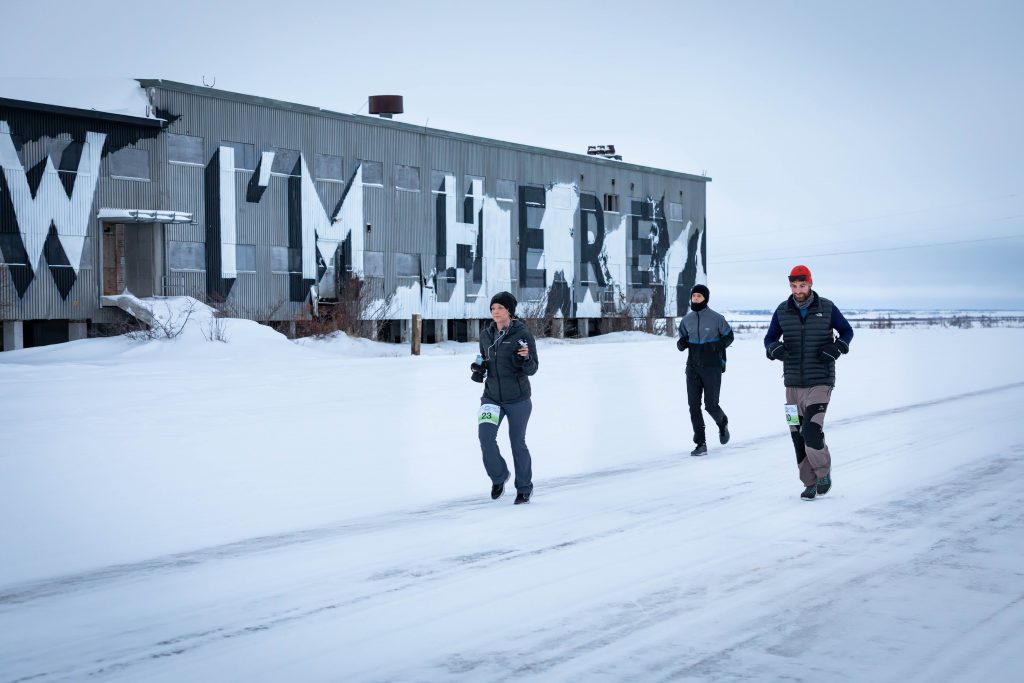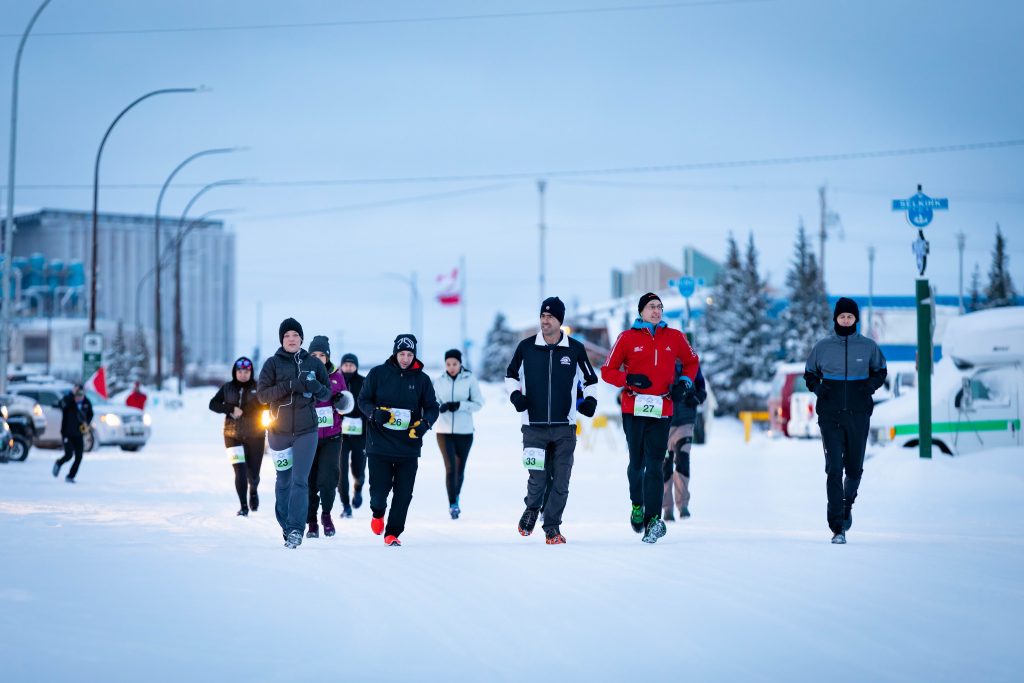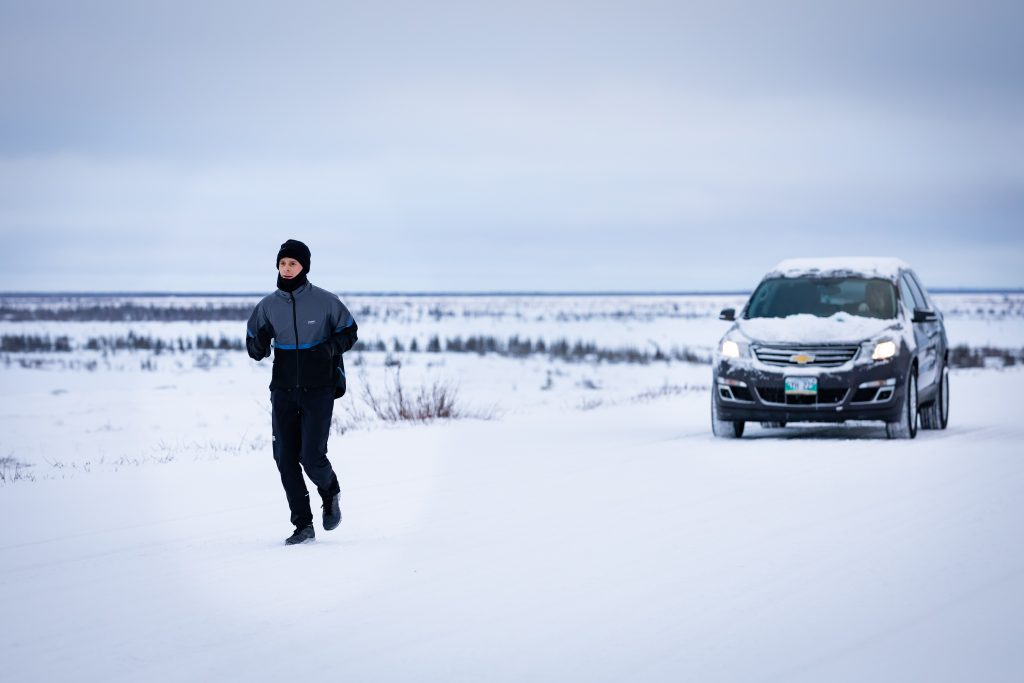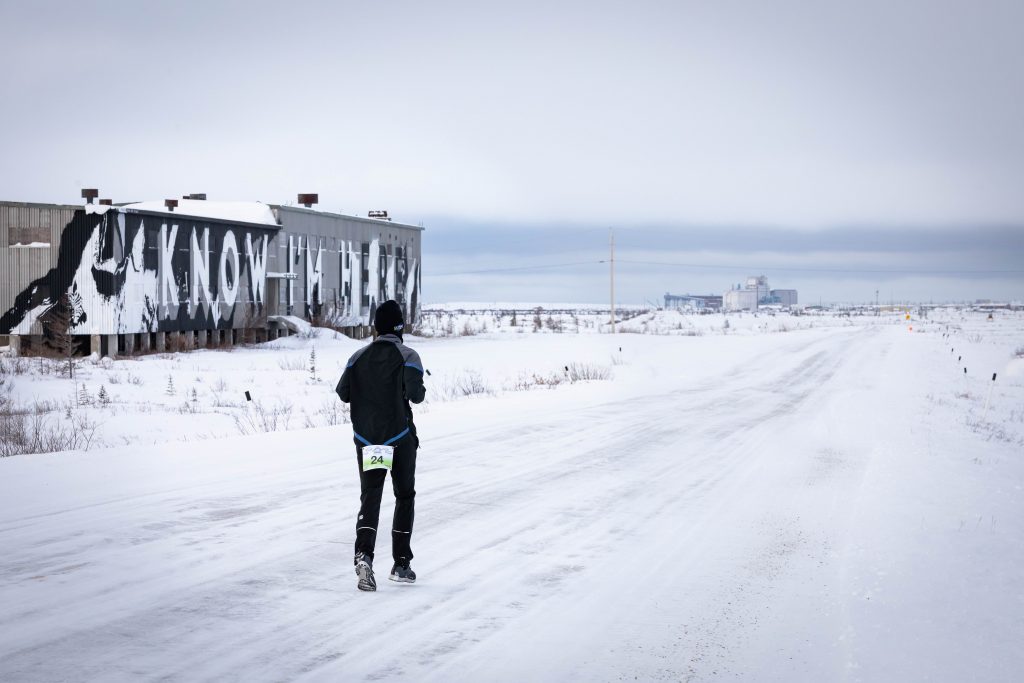
As a runner, I believe that the best way to get to know a place is on foot. Sure, you can cover ground more quickly in a car or plane, but to really know a place, you need to get out of your vehicle, plant your feet on the land, and feel the air on your face.
Growing up, I dreamed of experiencing the arctic. I grew up in the Canadian prairies of Manitoba. When I looked at photos of the tundra, and eyed vast stretches of unknown territory on the map north of us, I imagined exploring these remote places one day.
This is what drew me to the Polar Bear Marathon.
For the past 8 years, a group of runners has gathered annually in Churchill, Manitoba to run in one of the most extreme footraces in the world. Known as the “Polar Bear Capital of the World”, Churchill lives on the coast of the Hudson Bay on the edge of the Canadian tundra. Every autumn, photographers, scientists, and wildlife enthusiasts flock to this town of 900 residents for a chance to see polar bears as they migrate onto the sea ice to hunt seals for the winter.
Everything about the area speaks of resilience. Any wildlife is acclimated to cold weather, and resourceful in finding food. The trees, short conifers poking up through the rocks and snow, lack branches on their northern side because of harsh prevailing winds.
The people of Churchill, too, form a resilient, tight-knit community. In the spring of 2017, the railroad which supplied the town with the majority of its food and essentials was destroyed by flooding. For 18 months the town fought to get the railroad rebuilt. Their cry became “Know I’m Here”, a call to the rest of the country to remember this little northern town. (Watch the documentary about a 2017 Churchill art project, by the same name, here.)

In late November 2019, at the tail-end of polar bear season, I finally had the opportunity to toe the starting line, along with 16 other runners comprised of fellow adventure-seekers from across North America, as well as local runners. After a prayer and the national anthem, we ran east and out of town, beginning our adventure into the beautiful arctic morning.
Along with their keen interest in polar bear reports, runners watched the weather forecast intently leading up to the race. Winter is in full force by late November in northern Manitoba, and in previous years runners had faced brutal winds and temperatures down to -30° C (-22° F) during the race. As a necessary precaution, each runner was followed by an escort vehicle which offered both protection from polar bears, as well as a refuge from the cold.

Fortunately, this year the weather conditions were the warmest the race had ever seen, with light winds and a high temperature of about -5° C (23° F) on race day. To add to our good fortune, some early winter storms had formed early ice sheets on the bay, meaning most polar bears had already ventured off the land for the winter hunt.
The race course followed the only road out of town, over gentle hills and curves along the frozen coast. After passing the airport 4 miles out of town, we left pavement behind as the road turned to snow-covered gravel. There we topped a ridge and were greeted by a breathtaking view of the Hudson Bay, which was dotted with slowly-moving ice. Runners commented on the beauty of the landscape as we laid eyes on it for the first time. Though simple in features and covered in a soft blanket of snow, this place held a beauty unique to this place.

The out-and-back course returned us back to town, where runners and the escort drivers were treated to an awards dinner later in the evening. A local school class sang about living on the Hudson Bay, and a traditional Dené drummer shared a song. As each runner gave an introduction, I was struck by the warmth of the community of Churchill. This race was a significant event for several local runners, as well as the many volunteers who had given their time to ensure our safety during the race. The race director, Albert Martens, as well as the benefactor of the race, Athletes in Action, have invested in relationships in this community for many years, and the depth of these relationships was evident in the stories that were told.
The next morning we drove the same road we’d run the day before. As runners we laughingly expressed our painfully deep knowledge of each twist, turn, and hill in the road. But in truth, we got to know that corner of the world in a way many visitors do not – on foot. We had breathed deeply the crisp air that blew in from the bay, and taken note of every feature of the land as we moved through it. And we got to know a community who felt forgotten, who had asked us to “Know I’m Here”. Although my visit was short, I now feel I know the community of Churchill, as well as the land they call home.
To learn more about the Polar Bear Marathon, please visit albertmartens.com.
